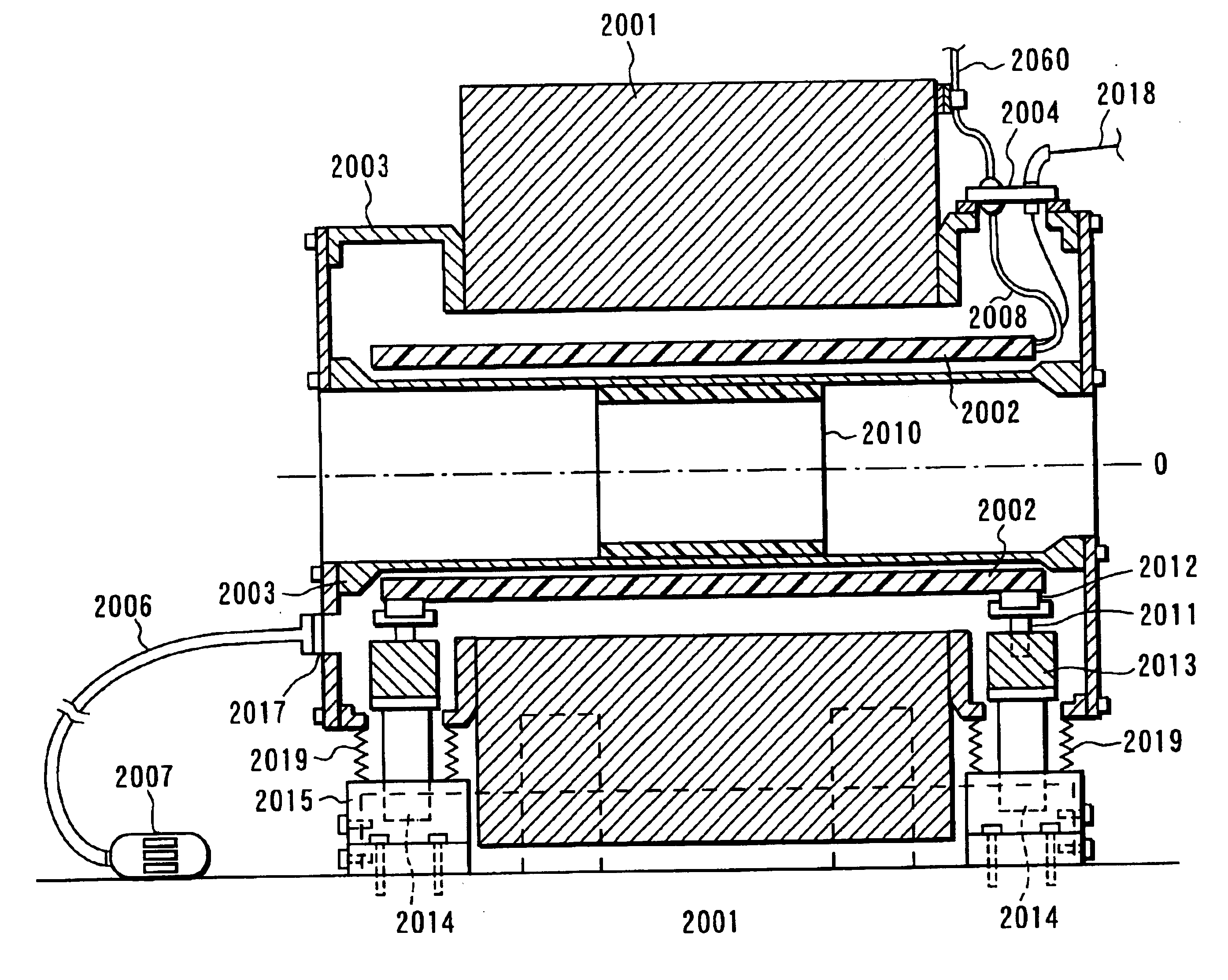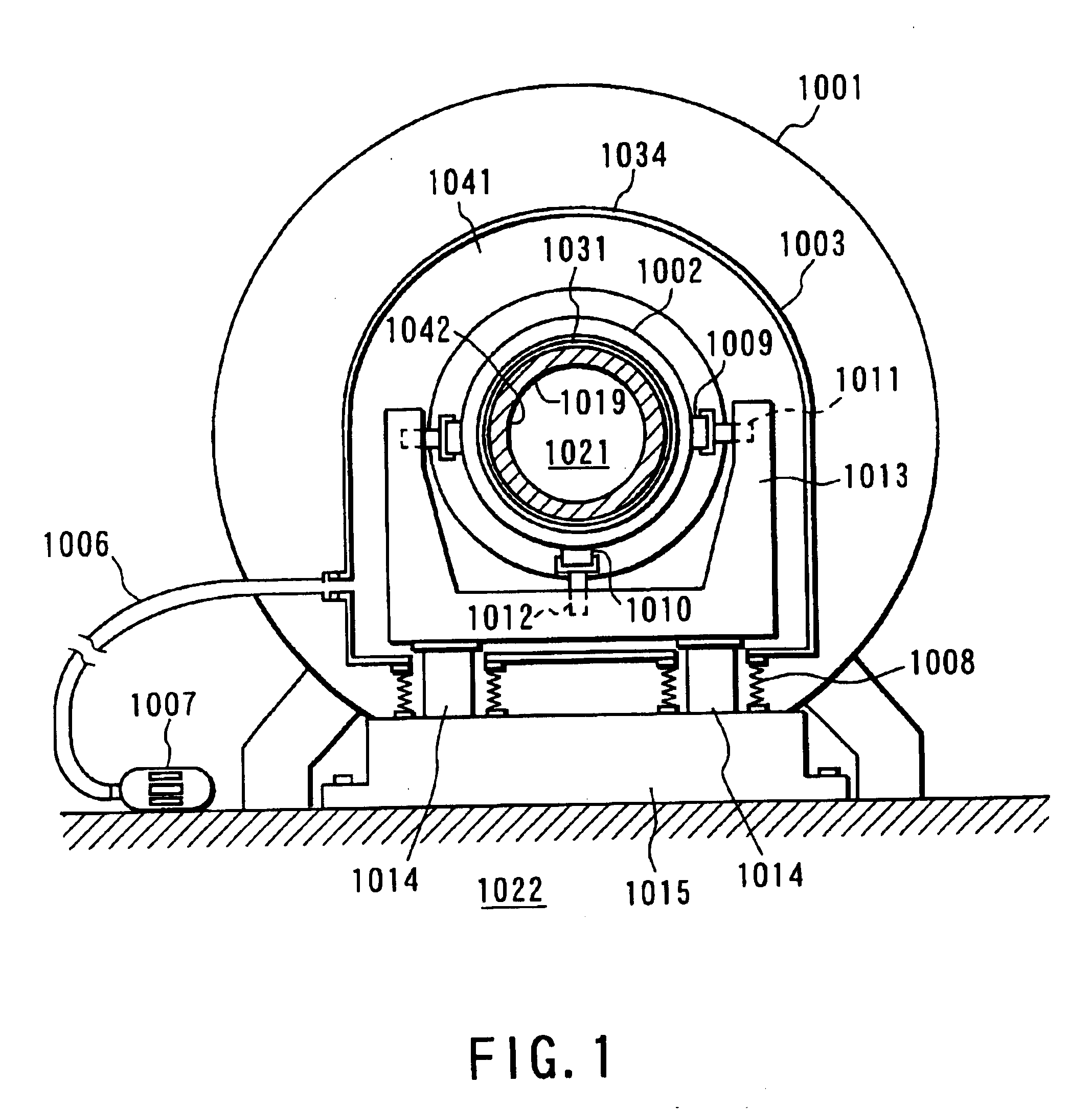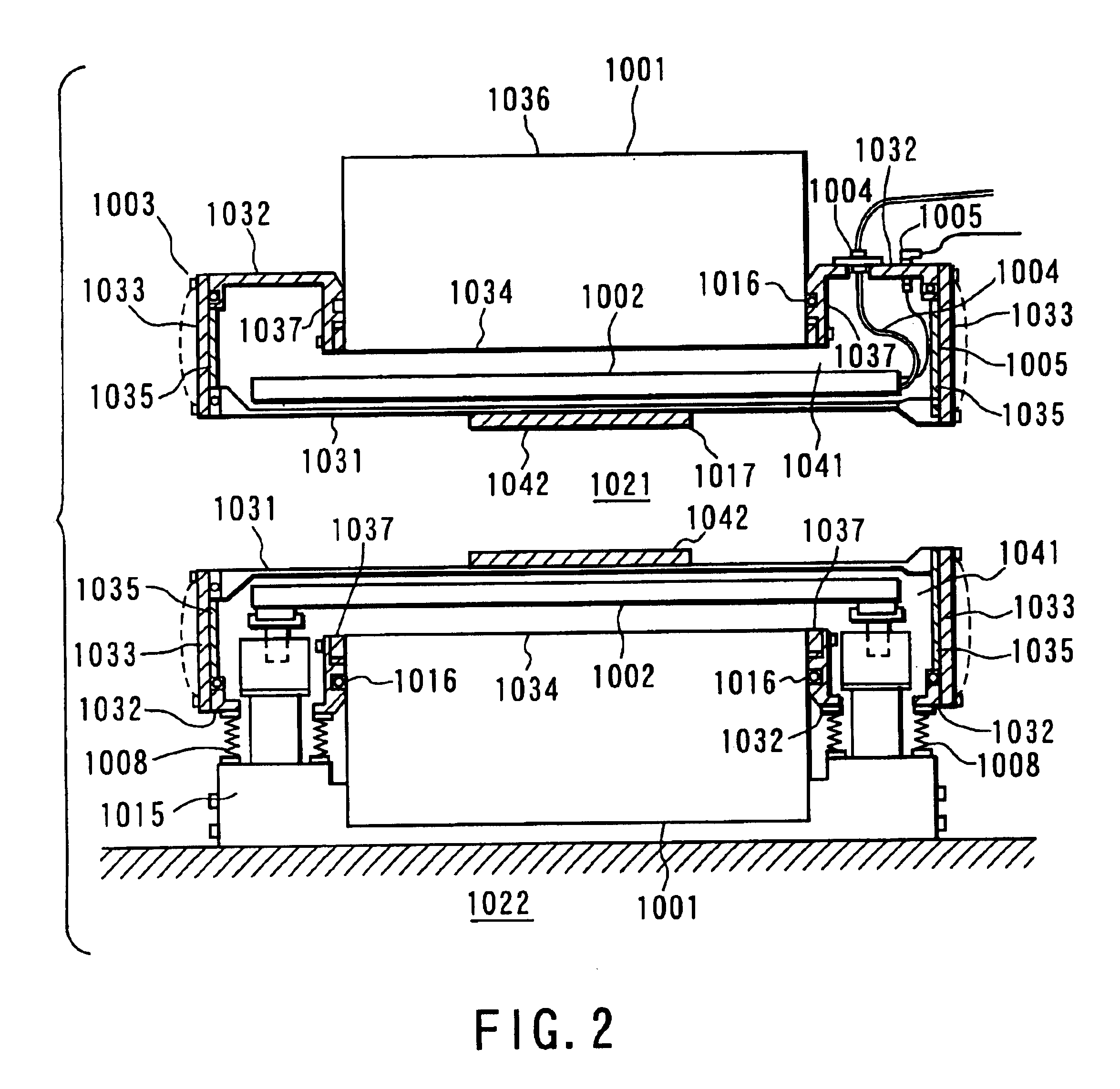Magnetic resonance imaging apparatus
a magnetic resonance imaging and gantry technology, applied in the direction of instruments, magnetic measurements, measurement devices, etc., can solve the problems of large noise, deformation of the sealed vessel itself, and leakage of magnetic fields from the two ends of the main coil, so as to improve the silencing ability of the gantry
- Summary
- Abstract
- Description
- Claims
- Application Information
AI Technical Summary
Benefits of technology
Problems solved by technology
Method used
Image
Examples
embodiment 1
(Embodiment 1)
[0095]FIGS. 1 and 2 are respectively a cross-sectional view and longitudinal sectional view of the gantry of a magnetic resonance imaging apparatus according to Embodiment 1. The gantry includes a static magnetic field magnetic unit 1001, gradient coil unit 1041, and RF coil unit 1042. An imaging area 1022 having a substantially cylindrical shape is formed in substantially the central portion of the gantry. The gantry is fixed on a floor 1021 through a base 1015.
[0096]The static magnetic field magnetic unit 1001 generates a static magnetic field in the imaging area 1022, and is comprised of, if it is of a superconductive type, a superconductive coil, a liquid helium vessel housing the superconductive coil, and a sealed vessel 1036 housing the liquid helium vessel. The RF coil unit 1042 has an RF coil spool 1017 on which an RF coil pattern is formed. The RF coil spool 1017 is held by a cylindrical fiber-reinforced plastic liner 1031.
[0097]The gradient coil unit 1041 has...
embodiment 2
(Embodiment 2)
[0103]FIG. 3 is a longitudinal sectional view of the gantry of a magnetic resonance imaging apparatus according to Embodiment 2. A superconductive coil is housed in a cryostat 2001. This superconductive coil serves to give an imaging area a homogeneous static magnetic field. The static magnetic field strength required for general MR imaging operation is about 0.1 to 1 tesla. A static magnetic field is required to have a spatial homogeneity of several 10 ppm or less, and the imaging area has a spherical shape with a diameter of about 50 cm.
[0104]A gradient coil 2002 is placed in a sealed vessel 1003. The gradient coil 2002 serves to give a main magnetic field a linear gradient to determine an arbitrary imaging slice or add positional information to an RF signal from an object to be examined. In general, the gradient coil 2002 is constituted by three independent coil sets Gx, Gy, and Gz for generating gradient magnetic fields in orthogonal x-, y-, and z-axes. For example...
embodiment 3
(Embodiment 3)
[0119]FIG. 7A is a cross-sectional view of the gantry of a magnetic resonance imaging apparatus according to Embodiment 3. FIG. 7B is a longitudinal sectional view of the gantry. A gantry 3019 has an imaging space S having a substantially cylindrical shape, in which a patient is to be inserted / placed. An object 3008 to be examined is placed on a top 3009 and inserted into the imaging space S of the gantry 3019. The operations of the gantry 3019 and top 3009 are controlled by a control processing section. Assume that the axial direction of the imaging space S is the Z direction, and directions perpendicular to the Z direction are the X and Y directions. The gantry 3019 has a static magnetic field magnet formed by, for example, a superconductive magnet, which generates a static magnetic field in the imaging space S, and a cryostat 3001 housing the magnet. The cryostat 3001 is mounted on four leg members 3027 extending upright from a floor F. The floor F is made of, for e...
PUM
 Login to View More
Login to View More Abstract
Description
Claims
Application Information
 Login to View More
Login to View More - R&D
- Intellectual Property
- Life Sciences
- Materials
- Tech Scout
- Unparalleled Data Quality
- Higher Quality Content
- 60% Fewer Hallucinations
Browse by: Latest US Patents, China's latest patents, Technical Efficacy Thesaurus, Application Domain, Technology Topic, Popular Technical Reports.
© 2025 PatSnap. All rights reserved.Legal|Privacy policy|Modern Slavery Act Transparency Statement|Sitemap|About US| Contact US: help@patsnap.com



